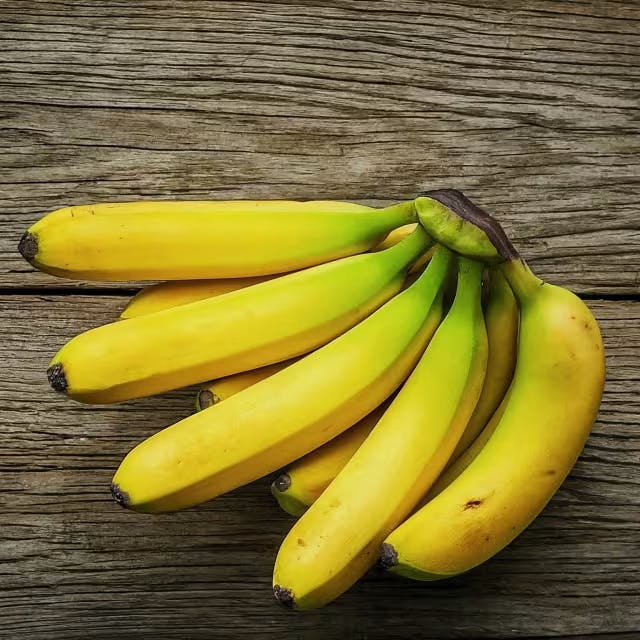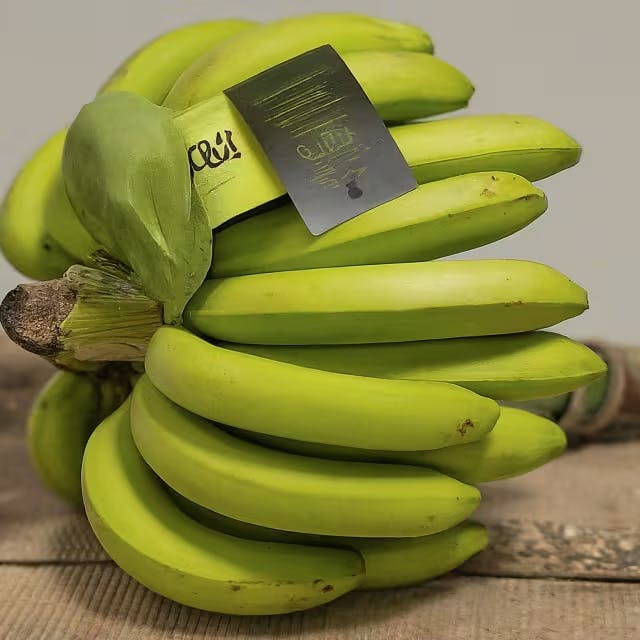Banana Plant Knowledge: An Herb or a Fruit?
Go4Turf
March 04, 2024
Diving into the world of bananas reveals more than just a tasty snack; it unfolds an intriguing question: Is the banana plant an herb or fruit? This question not only piques the curiosity of culinary enthusiasts and gardeners alike but also sheds light on the fascinating botany behind one of the world's most beloved foods. As we explore the banana plant knowledge, from its classification as a berry produced by the largest herbaceous flowering plant to its extensive cultivation across tropical regions, we embark on a journey that blends botanical insights with culinary discovery.
Key Takeaways
The banana plant is classified as the largest herbaceous flowering plant, indicating it's more than just a typical fruit tree.
Despite commonly being referred to as a fruit, bananas are technically berries.
The structure of the banana plant, with its leafy growth and lack of woody stem, contributes to its classification as an herb.
Bananas serve as both a fruit and an herb from a botanical perspective, showcasing the complexity of plant classifications.
Their cultivation spans tropical regions worldwide, highlighting the banana's significance in both global agriculture and culinary practices.
The journey of bananas from plant to plate encompasses a rich history and diverse cultural culinary uses, making it a staple food in many diets.
Understanding the Banana Plant: More Than Just a Fruit
Did you know that what we often call a banana tree is actually not a tree at all, but the world's largest herbaceous flowering plant? This fun fact is just the beginning of what makes the banana plant so fascinating. Not only are bananas one of the most consumed fruits globally, with varieties like the sweet dessert bananas and the starchy cooking bananas known as plantains, but they also play a crucial role in many people's diets around the world. Their versatility doesn't end at the kitchen door. Beyond their edible fruit, banana plants offer ornamental value with their lush, tropical appearance, making them a popular choice for landscaping.
Bananas thrive in the right conditions, swiftly growing to produce clusters of fruit from their "false stem." Interestingly, each cluster can weigh quite a bit, considering bananas are predominantly made up of water. Originating from tropical Indomalaya and Australia, bananas have found their way across the world, now cultivated extensively in places like India, China, and even parts of the United States like Florida, despite the plant's vulnerability to frost.
Diving deeper into the nutritional benefits, bananas are not just a tasty snack but also a source of essential vitamins and potassium. The distinction between bananas and plantains, primarily in preparation methods and the presence or absence of the male flowering axis, underscores the plant's diversity.
For those interested in bringing a touch of the tropics to their garden and learning more about the growth and care of these fascinating plants, exploring more about growing banana plants could be quite rewarding. Whether for their fruit, fiber, or simply their majestic appearance, the banana plant holds a lot more than meets the eye. For a more in-depth look into bananas, including their history and various uses, visit this comprehensive guide and here for growing tips.
Diving Into the Structure: Is the Banana an Herb?
When exploring whether the banana qualifies as an herb or a fruit, it's essential to focus on its botanical structure. Unlike the common notion of herbs, banana plants reveal their unique characteristics, which often surprise many. The banana plant is actually classified as an herb due to its tree-like structure, known as a "pseudostem," which is made of leaf sheaths. Unlike typical trees with woody trunks, the banana's pseudostem is soft and does not contain true woody tissue.
Bananas themselves are considered berries from a botanical standpoint. The confusion often arises from traditional categorizations and common usage, where "herb" refers to leafy plants used for seasoning, and "fruit" to the sweet, fleshy products of trees. However, the banana's classification as a berry further complicates its perception, as it defies the common characteristics expected of berries.
This poignant example of how plants can defy our usual classifications underlines the complexity of botany. Researchers have even studied plants like Venus flytraps to understand anesthesia's effects, highlighting the surprising parallels between plant and animal biology.
So, while bananas enjoy a daily spot in fruit bowls across the world, their botanical identity narrates a story of structural uniqueness and classification complexity, bridging a gap between common perceptions and scientific reality.

The Surprising Truth About Banana: Herb and Fruit Explained
Diving into the essence of banana plant knowledge, let's unravel a common misunderstanding: is it an herb or a fruit? The banana plant, belonging to the Musa genus, showcases characteristics of both. Its structure, often confused with that of a tree, is actually a pseudostem, earning it the title of the largest herbaceous flowering plant. This peculiar form sprouts from an underground stem known as a corm.
Bananas themselves, fascinatingly, are botanically classified as berries. They stem from the Musa genus, thriving in tropical regions, highlighted by their elongated, curved nature with a spectrum of colors from green to ripe brown. The intriguing aspect lies in their dual nature, catering to both dessert and kitchen needs. While dessert bananas seduce with their sweetness, plantains stand out with their starchiness, underpinning their versatile culinary uses. Originating from wild species like Musa acuminata and Musa balbisiana, these fruits have been domesticated across diverse landscapes, marking their significance in traditional and modern diets alike.
India and China spearhead global production, contributing to approximately 38% of the worldwide supply. Beyond their delicious fruit, bananas are harnessed for fiber, wine, beer, and even as ornamental plants, showcasing their multifaceted value in human culture and beyond. This dynamic between being both a fruit and an herb enriches the banana plant knowledge, illustrating its unique standing in the botanical realm.

The Culinary Journey of Bananas: From Plant to Plate
Understanding the journey of bananas, from their origins on farms in tropical climates such as Central America to the shelves of U.S. stores, reveals an extensive and meticulous process. These beloved fruits necessitate specific growing conditions, including temperatures around 80°F and ample rainfall, to thrive. After achieving the perfect growth, bananas undergo harvesting, careful packing, and are then shipped under temperature-controlled conditions to maintain freshness. The story of bananas doesn't end here; logistic strategies play a crucial role, with companies like Del Monte employing advanced supply chain management techniques to ensure these fruits reach consumers in prime condition. The U.S.'s appetite for bananas is evident, consuming over 6.4 billion pounds annually, marking a significant 175% increase in demand over the past 30 years. This impressive figure places bananas and plantains as the fourth largest food crop globally. However, the banana's journey from farm to plate is not without its challenges. The need to balance economic growth with environmental sustainability remains a pressing concern within the industry. Learn more about the fascinating journey of bananas and the intricate networks that bring this staple fruit to your table. The banana plant, with its intricate botanical structure and substantial nutritional contributions, transcends common classifications, embodying both an herb and a fruit within its unique identity. This revelation redefines our understanding of what is often viewed as a simple snack, elevating its status in the botanical world and underscoring the importance of accurate banana plant knowledge. As we explore the culinary and ornamental versatility of bananas, we gain a deeper appreciation for this exceptional plant that thrives in the heart of tropical cultivation, enriching diets and landscapes around the globe.
Frequently Asked Questions
Is the banana plant considered an herb or a tree?
The banana plant, contrary to common belief, is classified as an herb due to its pseudostem, which is made of leaf sheaths instead of woody tissue. This large herbaceous flowering plant manages to defy traditional classifications, as its bananas themselves are botanically considered berries, despite sharing no common traits with typical berries. This unique biological structure sets the banana plant apart in the botanical world, bridging the gap between common perceptions and the complexities of botany.
How do bananas qualify as berries from a botanical standpoint?
Bananas qualify as berries in a botanical sense because they develop from a single ovary of a flower and contain multiple seeds. Their structure, alongside the soft, herbaceous plant (the pseudostem) they grow on, classifies them uniquely compared to typical fruits. This botanical classification defies the common perception by including bananas in the berry category due to their specific developmental process and seed containment.
What makes bananas such a versatile fruit in the kitchen?
Bananas are exceptionally versatile in the kitchen due to their diverse types, like sweet dessert bananas and starchy cooking plantains, catering to various culinary needs from sweet dishes to savory meals. Their nutritional benefits, providing essential vitamins and potassium, make them a healthy addition to diets worldwide. Moreover, beyond their direct consumption, bananas contribute to recipes in numerous forms such as baked goods, smoothies, and cooked dishes, demonstrating their multifaceted culinary applications.
Why is the banana plant classified as the world's largest herbaceous flowering plant?
The banana plant is classified as the world's largest herbaceous flowering plant because its structure, known as a pseudostem, is made up of leaf sheaths instead of true woody tissue, typical of trees. This pseudostem sprouts from an underground stem called a corm, distinguishing the banana plant from woody trees and earning it its categorization as an herb. Furthermore, bananas themselves are considered berries from a botanical perspective, adding another layer to the plant's unique characteristics.
How do the growth conditions differ between dessert bananas and plantains?
Dessert bananas and plantains, while closely related, have slightly different growth requirements that are influenced by their desired characteristics at harvest. Dessert bananas, coveted for their sweetness, often require consistent temperatures around 80°F and plenty of water to thrive. In contrast, plantains, which are starchier and used more like a vegetable, can tolerate a slightly broader range of conditions, including marginally cooler temperatures. Both, however, thrive in tropical or subtropical climates with rich, well-draining soil and adequate protection from strong winds to prevent damage to their large leaves.